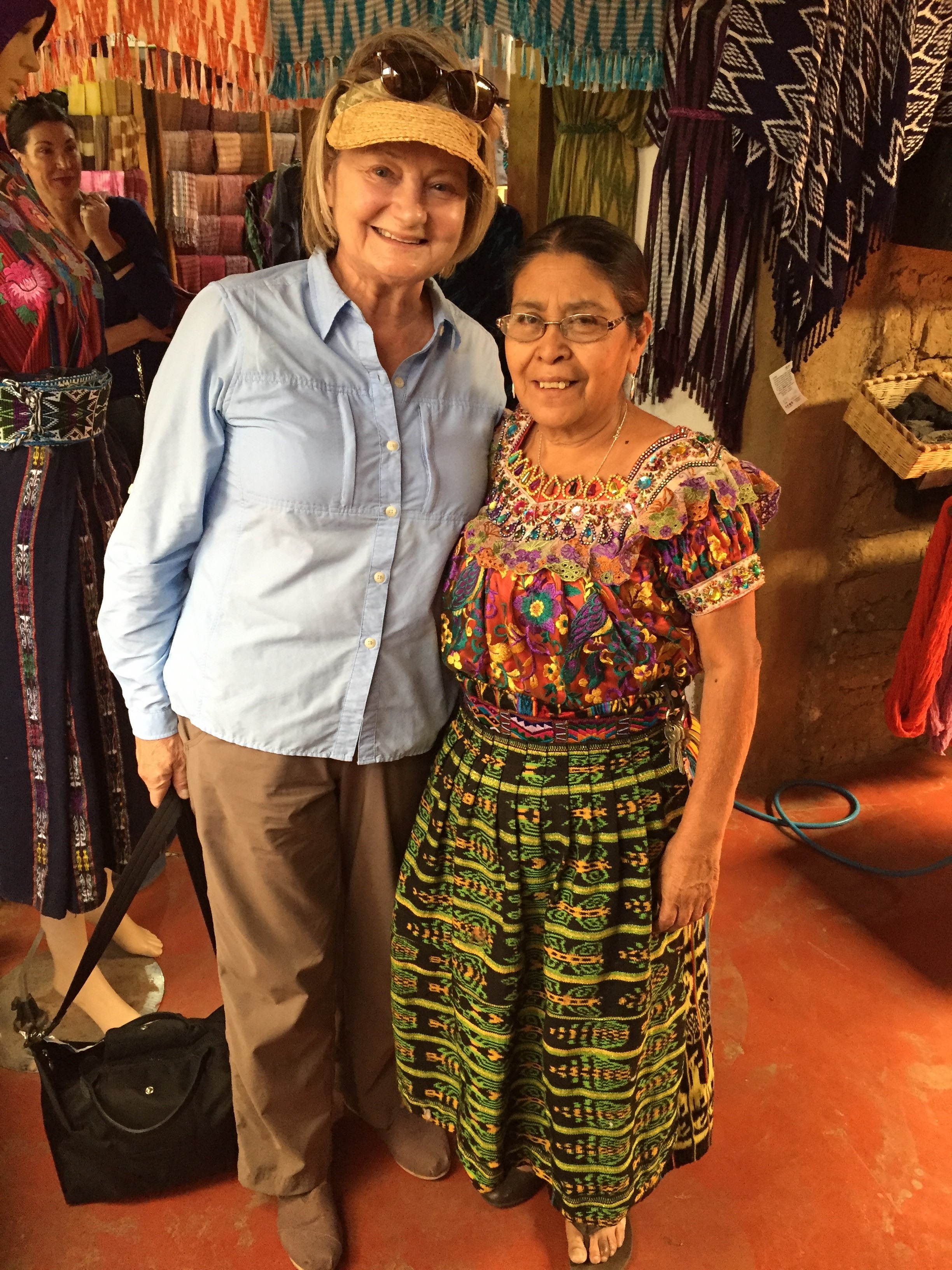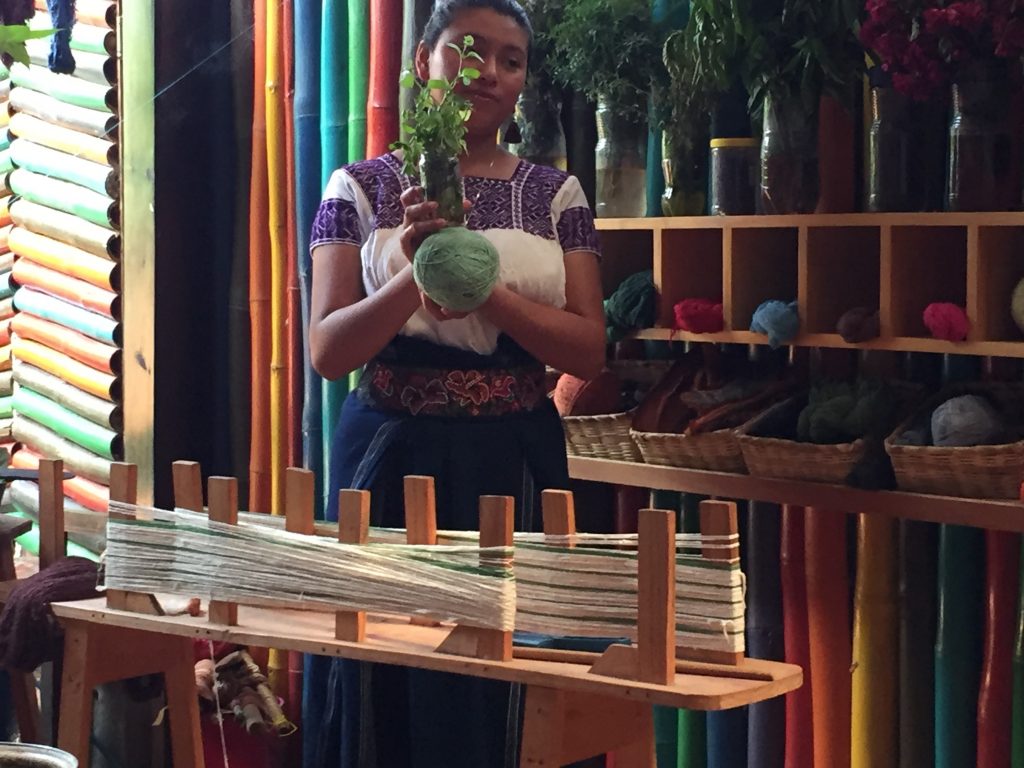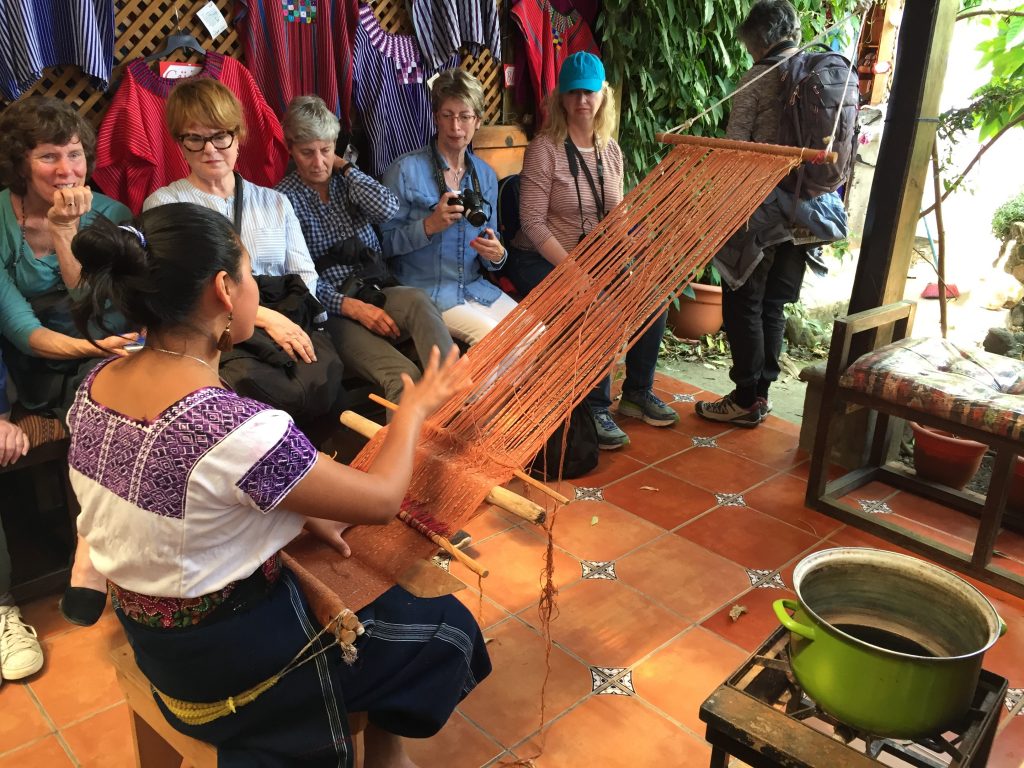
Guatemala 2018 – Day 3 – Weaving and Retail Therapy
By Emmy Holt, Dining for Women member, SC, Greenville-7 chapter
After being served breakfast at the hotel, we walked down to the dock in Panajachel where we climbed into motor boats and crossed Lake Atlitlan (translation: “near the volcano”) to San Juan La Laguna. What a beautiful lake, formed from a crater after the 1853 volcanic eruption! The lake connects the villages, is 12 miles long, and over 1000 feet deep. From the lake we could see three cone-shaped volcanos- Atitlan, Toliman, and San Pedro.
A brief uphill walk (or ride in a tuk-tuk) led us to Casa Flor Ixcaco, a weavers’ community that is the only one in Guatemala that creates woven goods from natural dyes. In 1996, a Mayan woman, Teresa Ujpan Perez, organized five community women and formed the women’s cooperative that has now grown into a direct source of economic activity for 34 women.
 Among others, we were delighted to meet a grandmother, mother, and daughter of the industry, each one passing down age-old methods from one generation to the next. This was a weaving industry right before our eyes! And, it was hands-on. We separated seeds from cotton grown in nearby mountains, flattened the unseeded cotton ball, started the first thread that would then be spun by a hand-spinner for winding the thread into skeins. We learned that it takes 16 hours to finish one spun cotton ball.
Among others, we were delighted to meet a grandmother, mother, and daughter of the industry, each one passing down age-old methods from one generation to the next. This was a weaving industry right before our eyes! And, it was hands-on. We separated seeds from cotton grown in nearby mountains, flattened the unseeded cotton ball, started the first thread that would then be spun by a hand-spinner for winding the thread into skeins. We learned that it takes 16 hours to finish one spun cotton ball.
Using only natural dyes, the ladies showed us how the cotton is dyed over 12 hours using such native plants as mint, bougainvillea, coconut, onion, avocado, coffee, indigo, and many more. After the cotton is hung and dried, it is wound on a warp made of wooden sticks, then moved to a back-strap weaving loom for the final step of the weaving process. One woman working for eight hours a day can complete a table runner in two weeks. We were overwhelmed with not only the intricate finger-work and diligence, but also the gorgeous scarves, bags, shawls, capes, and blankets that were available to buy. And, we did!
 After significant retail therapy, we were thrilled to be invited into the Association of Medicinal Plants, just a few feet from the weavers. Using native plants that we saw growing in the gardens, ladies create natural medicines for healing. We understood its use as a pharmacy and clinic, with medicines made from eucalyptus, rosemary, lemon grass, basil, marigolds, and many more. Of course, it became another shopping opportunity for us to find treatments for wrinkles, aching muscles, migraines, sleeplessness, and a host of other ailments.
After significant retail therapy, we were thrilled to be invited into the Association of Medicinal Plants, just a few feet from the weavers. Using native plants that we saw growing in the gardens, ladies create natural medicines for healing. We understood its use as a pharmacy and clinic, with medicines made from eucalyptus, rosemary, lemon grass, basil, marigolds, and many more. Of course, it became another shopping opportunity for us to find treatments for wrinkles, aching muscles, migraines, sleeplessness, and a host of other ailments.
Back to a boat ride to Santiago and a delicious lunch at Posada de Santiago. We visited the House of Maximon, aka St. Simon, on the very holiday when his birthday is celebrated. The celebration is a combination of Catholic and Mayan religions. Because of the Mayans’ love and respect for this folk saint, there is a shrine, filled with icons, statues, and designated people, where his legacy is celebrated through cultural customs of dance, music, drink, and smoke. It was a bit overwhelming to us tourists, but a great way to see people in their indigenous dress having fun.
